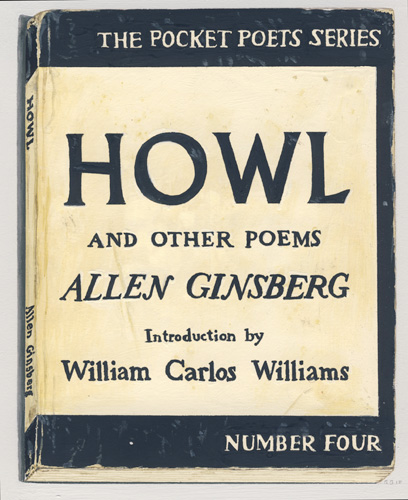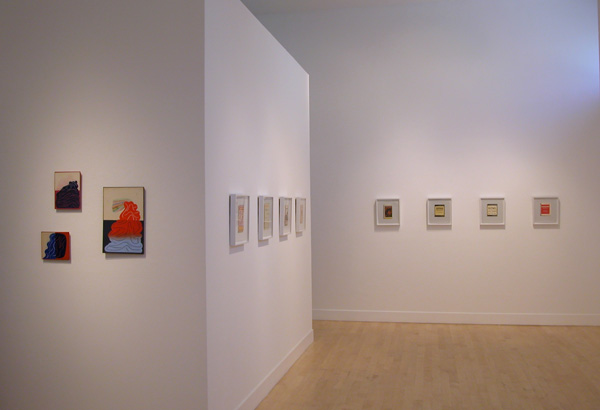
February 14, 2011
Cover to Cover

Richard Baker Howl, 2010 Gouache on paper
12 x 10.5 in.

Tom Burckhardt Rampart St., 2010 Colored pencil & acrylic on book cover
8 x 10.5 in.

Installation view.
By Seth Curcio
As contemporary life embraces digital formats as a means of convenience, analog devices have become more and more scarce in contemporary society. Record albums have all but disappeared for mp3s, newspapers for blogs (such as DailyServing) and printed books for Kindles and iPads. While there is a growing demand for these analog items for the nostalgic, these physical objects are equally fetishizied as they diminish as part of our everyday life. I'm a sucker for a good artist monograph, and I have a several bulging bookshelves to prove it. I seem to constantly remind myself not to fall victim to attractive packaging and always to evaluate the contents of a given publication over how well made or designed it may be.
Currently on view at Gregory Lind Gallery in San Francisco are two artists that use the physicality of the book as a subject, both in image and as object. Tom Burckhardt has collected the front and back covers of various found books, intermingling the book covers existing markings with formally constructed painting. The coexistence of the books physicality along with Burckhardt's own marking collapses our expectations of these objects as books, liberating the materials from their utilitarian function, and binding them to the world of formal abstraction.
Richard Baker, approaches the notion of the book through representation, painstakingly rendering all of his subject's physical details. Literary masters from the 1950s through the 70s, many having worked in San Francisco where this exhibition takes place, such as Allen Ginsberg and Jack Kerouac, sit along side books that reference the art world, such as the book A, written by Andy Warhol. For Baker, the books rendered mark important moments of recent social history, blending the nostalgia for these books as items of historical markings with the art object.
While each of these artists turn their attention to books as objects and images in very different ways, the feeling of longing for the physical, analog quality of material is present. In many ways, the works on view transcend the subject referenced or the material sourced, binding the viewer to our wavering relationship to these physical objects.